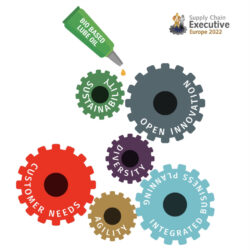Supply chain ecosystems

The world is being plagued by exceptional droughts and heavy, very localized, flooding. According to the European Drought Observatory, Europe is drier than it has ever been in the past 500 years. The climate is also having a very direct effect on supply chains. For example, the extremely low water levels in the Rhine and Danube rivers – two key inland transport arteries – are delaying supplies of raw materials and finished products. And such logistical bottlenecks caused by drought and other effects of climate change are likely to recur and intensify in the years ahead.
Over the past few years, the word ‘ecosystem’ has repeatedly cropped up in a business context. Companies are coming under increasing pressure from various stakeholders to operate more sustainably. The concept of supply chain ecosystems is also becoming more commonplace nowadays. Traditional linear supply chains have evolved into intricate networks of companies working in partnership, with varying flows of goods, information and capital. Just as in the natural world, these supply chain ecosystems must become increasingly circular in the context of sustainability.
Ecosystem of household products
Such business ecosystems are also hugely complex, which makes it difficult to identify and realize improvements. That’s why I set out to develop my own method of visualizing a supply chain ecosystem, starting with household products. Other product groups will follow, aimed at simplifying discussions about how to make supply chain ecosystems sustainable.
Despite the climate change challenges, Mother Nature offers some terrific solutions. A recent interview with the supply chain director of The Seaweed Company opened my eyes to the unprecedented potential of seaweed for food, animal feed, soil improvement and construction materials. The development of this sustainable supply chain ecosystem not only has a positive impact on CO2 emissions into the air, but also on the quality of seawater and the seaweed population.
Innovative solutions
Visualizing the seaweed supply chain ecosystem can help to identify innovative solutions for the global challenge of mitigating climate change. Supply Chain Media is keen to contribute to these visualization and communication efforts.
Martijn Lofvers, Chief Trendwatcher Supply Chain Media
martijn.lofvers@supplychainmedia.nl









